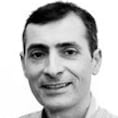There are few places where you can be in the company of strangers for a while without someone glancing at a smartphone. Fewer still where you can sit – or stand or kneel – together to reflect on life’s deepest questions.
This explains why I enjoy going to Mass occasionally – an embarrassing admission for an atheist. Strictly speaking, I’m there for two things: scripture and prayer. Neither requires a belief in God, although I’m sure practising Catholics will say it helps.
There is a long tradition of atheists engaging with the text of the Bible. In his latest book, Christian Atheism, Slovenian philosopher and self-proclaimed communist Slavoj Žižek argues: “To become a true dialectical materialist, one should go through the Christian experience.”
Christian teaching is a way of understanding moral ideals that underpin secular institutions and progressive causes. Or, as author and “lapsed Catholic” Sally Rooney put it in a recent Irish Times interview, Christianity “is a really beautiful, rich and worthwhile spiritual and intellectual tradition of thinking about ethics, about our relations with other people”.
The other reason to go to church – for prayer – is more to do with the spirit than society. Lighting candles for my late parents makes me feel closer to them, even if my internal monologue praising their names goes nowhere.
Beyond a connection to our ancestors, prayer can allow us to vocalise – internally or otherwise – suppressed emotions or fears. Several studies indicate a health benefit, with one 2009 psychiatry trial recording that participants who prayed for just six weeks “showed significant improvement of depression and anxiety” compared to a control group. A follow-up study found “subjects maintained significant improvements for a duration of at least one year after the final prayer session”.
Other research is less conclusive, with a 2022 study finding “prayer efficacy” varies depending on prayer type. One form of devotional prayer – “asking God for forgiveness” – correlates with higher anxiety, while another form – “praising God” – is associated with lower anxiety, researchers found.
“The psychological literature is clear on this subject. Prayer can reduce stress,” says Stephen J Costello, director of the Viktor Frankl Institute of Ireland.
“All the scientific studies point to greater resilience and meaning and happiness among those who have a religious sense and sensibility.”
In Christianity, there are numerous different types of prayer. Perhaps the best known is “intercessory” or “petitionary” prayer, what Immanuel Kant called “wheedling with God”, says Costello. There is also “contemplative” prayer – which is more like a spiritual exercise independent of faith.
“[The French philosopher] Simone Weil says pure attention is prayer. As such, the act can be carried out by the atheist ... Just sitting still and directing one’s attention outwards, as Iris Murdoch recommends, on to a leaf or pond or duck wherein the ego is emptied is crucial. Imagine, she says, a boy brooding and bored in his study. Suddenly a kestrel hovers outside. He turns to look. At that moment, all is kestrel.
“This turning, which Plato mentions, is a turning from the world of becoming with all its comings and goings and changes to the world of pure being – silent stasis. In meditation, we get glimmers of such profound peace.”
Costello, a philosopher and “logotherapist” – or practitioner of Frankl’s branch of psychoanalysis – takes prayer to another level in a new book, Ignatian Mysticism. This explores how St Ignatius of Loyola formulated a set of reflective practices known as the Spiritual Exercises. Ignatius “commends a form of imaginative prayer. So, through the ‘application of the senses’ and the ‘composition of place’, the person places himself into the Gospel scenes and imagines what the people present are saying or doing,” Costello explains.
“It’s a way of deploying the imagination in prayer to make the Gospels come alive and become vivid. There are many existential exercises throughout but they culminate in the Contemplatio – ‘the Contemplation to Attain Love’ – where the retreatant, who usually spends a month away doing the ‘four weeks’ of the exercises, is asked to consider how the divine dwells in all things giving them life.”
If that sounds like a big commitment, Costello says: “Ignatius also suggests a method whereby we use the breath and repeat one word like a mantra. This connects us to the practice of the Desert Fathers [a group of early Christian hermits].”
Secularising prayer could be taken too far. Manifesting – a Californian trend of “thinking your aspirations into reality” – has become a licence for more consumerism. If prayer means anything, with or without God, then surely it’s about focusing on what really matters, deep in the human core.
“Prayer leads inexorably to loving service,” Costello adds.
“Gratitude is an attitude. It is also a practice, one enjoined by the Stoics and Ignatius too. I would encourage everybody to meditate, to just sit still and ‘do nothing’, which is a way of doing everything. This action by non-action is transformative. It is also useless. That’s why it’s so important.”













